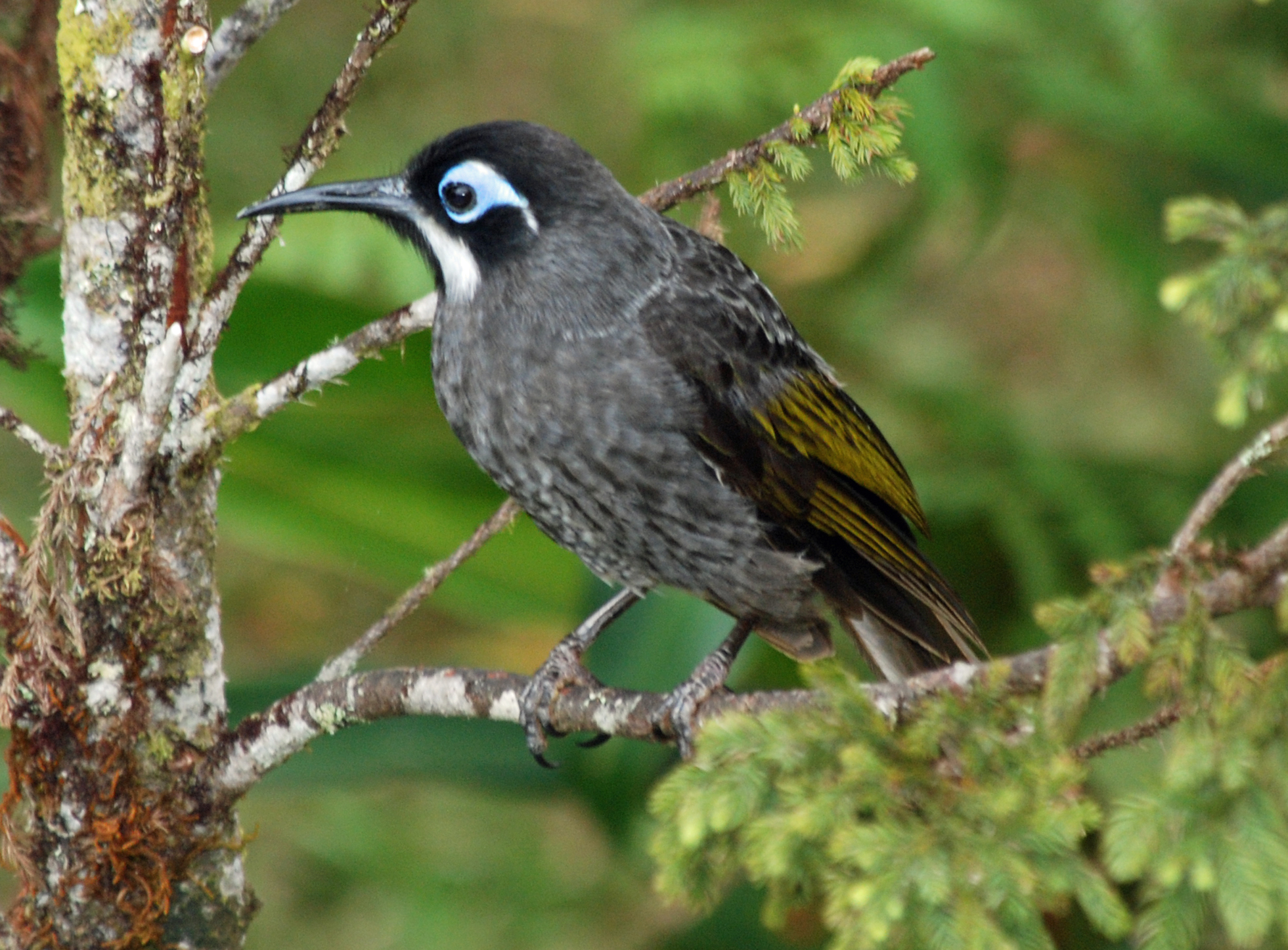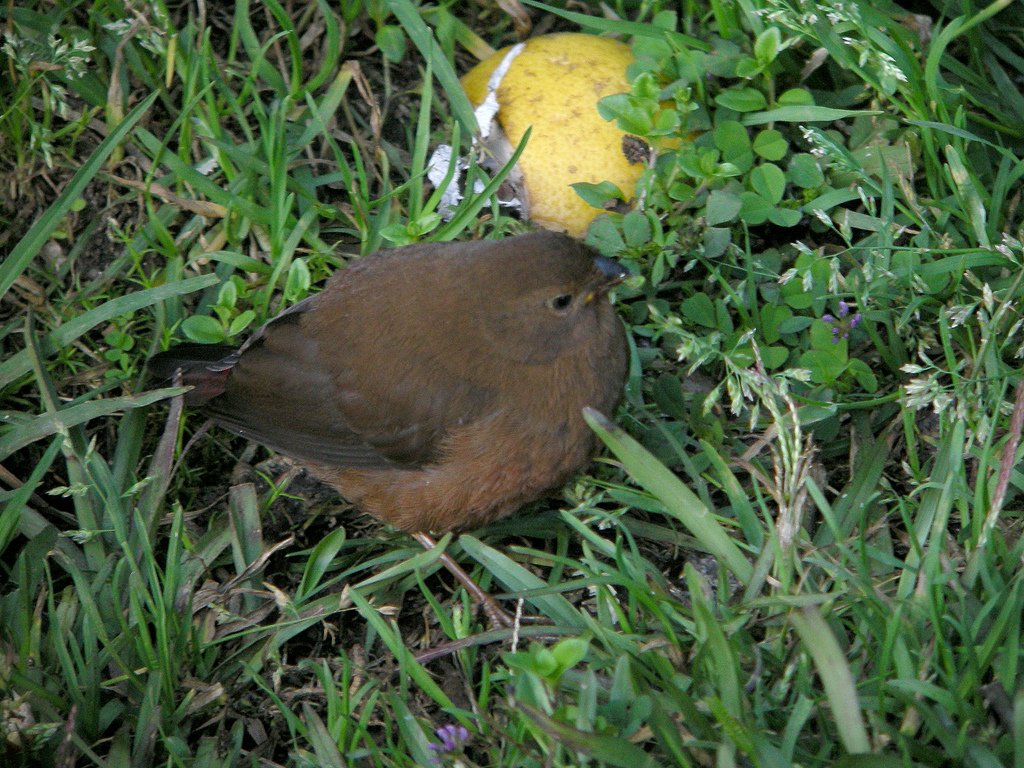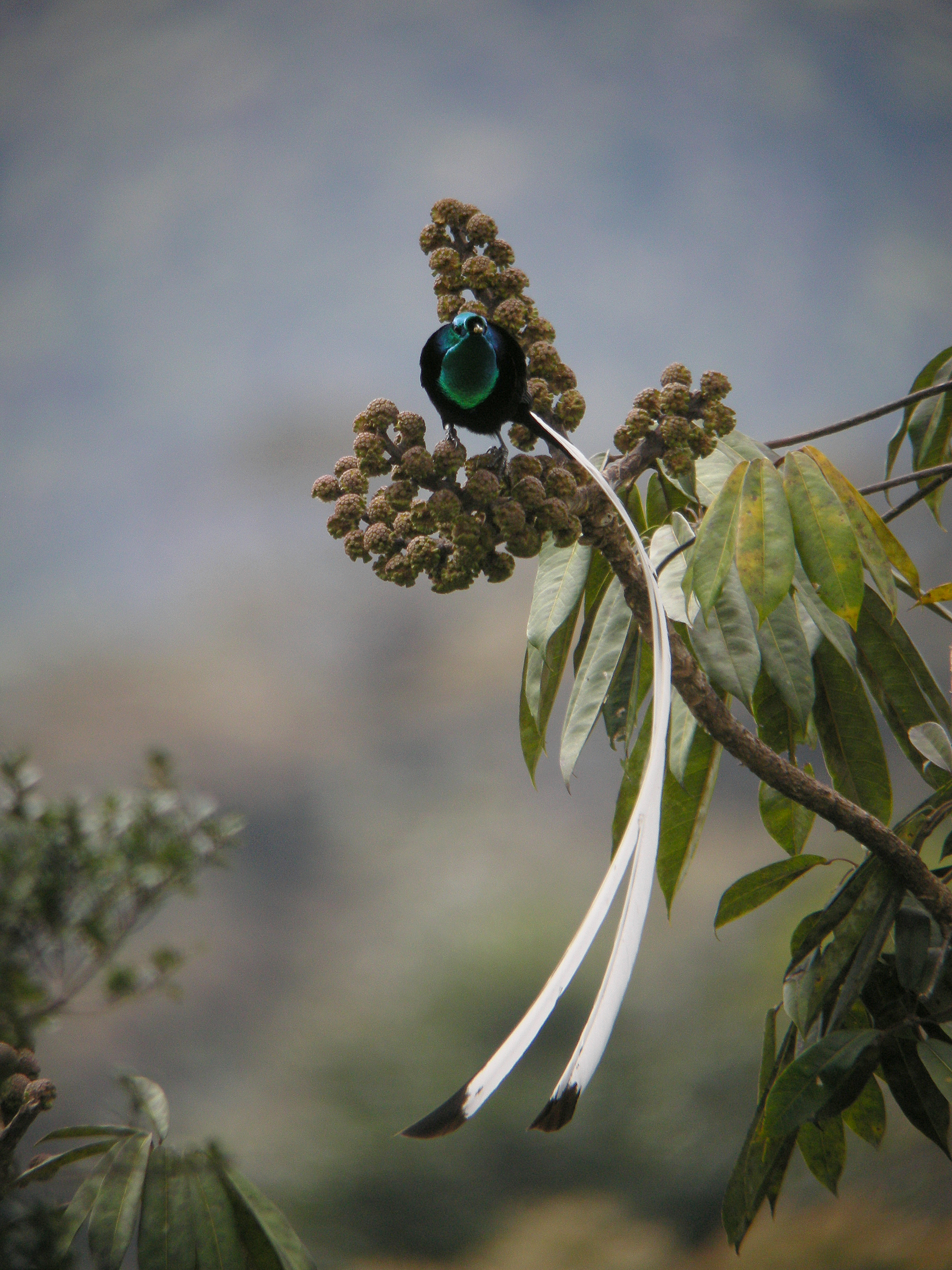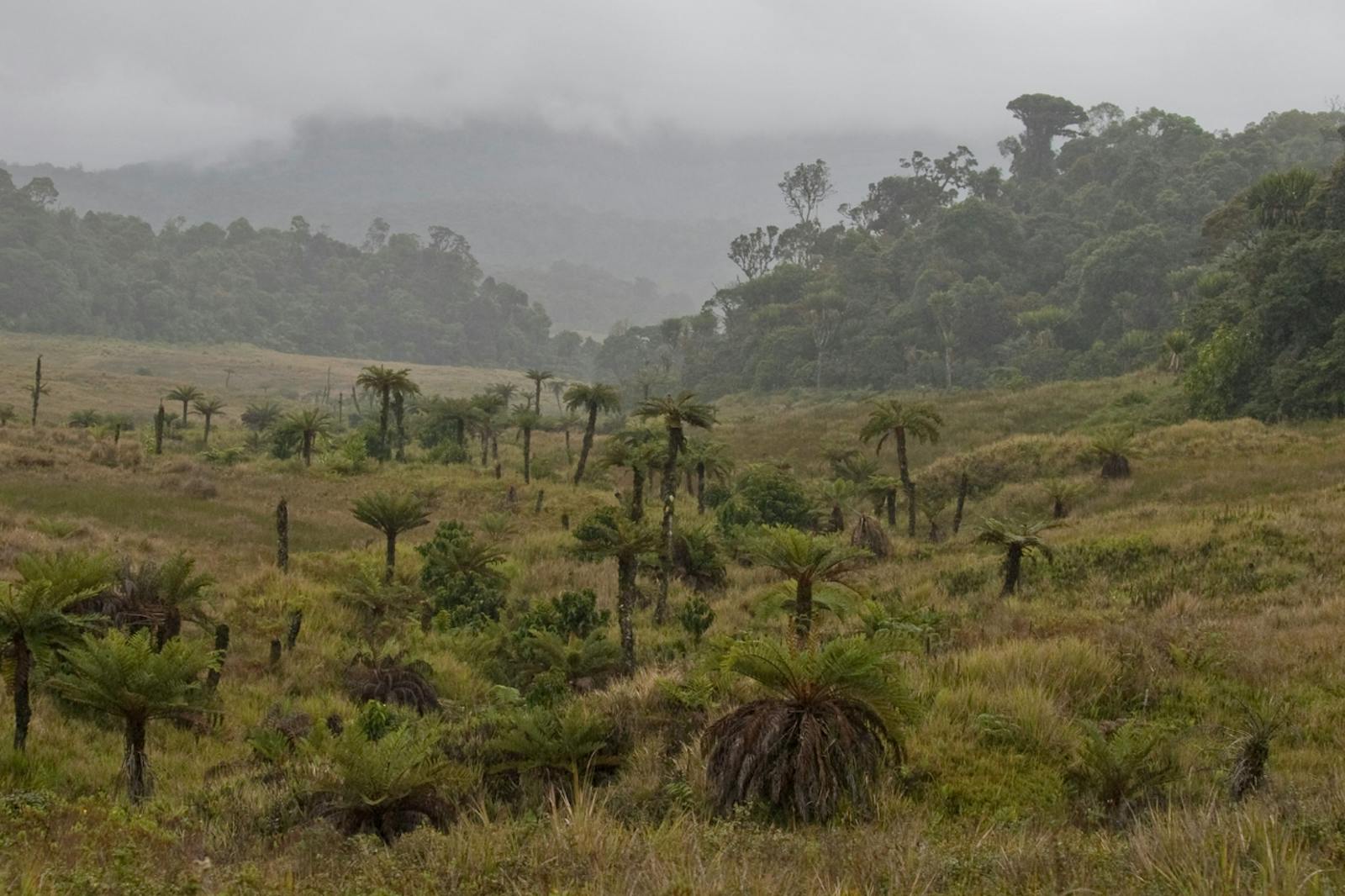Papuan Central Range Sub-Alpine Grasslands
The ecoregion’s land area is provided in units of 1,000 hectares. The conservation target is the Global Safety Net (GSN1) area for the given ecoregion. The protection level indicates the percentage of the GSN goal that is currently protected on a scale of 0-10. N/A means data is not available at this time.
Bioregion: New Guinea & Surrounding Islands (AU13)
Realm: Australasia
Ecoregion Size (1000 ha):
1,561
Ecoregion ID:
195
Conservation Target:
53%
Protection Level:
7
States: Papua New Guinea, Indonesia
Tall, wet, tropical, and isolated define New Guinea’s Central Range alpine habitats. Puncak Jaya (4,954 meters) stands as the highest peak in Australasia and the tallest island mountain in the world, capped by Equatorial glaciers. The East-West trend of the Central Range catches shifting monsoonal rains all year, making it one of the wettest tropical alpine environments anywhere.
.jpg)
The flagship species of the Papuan Central Range Sub-Alpine Grasslands ecoregion is the MacGregor's honeyeater. Image credit: iNaturalist, Phil Chaeon (CC by NC)
Many of the tallest mountains of the 1,950 kilometers range (for example, the Snow Mountains in Irian Jaya, the Star Mountains in Irian Jaya and Papua New Guinea, and the Central and Eastern Highlands of PNG) are ecologically isolated from one another by much lower highland forests, driving the evolution of alpine plants and animals unique to each peak. The spectacular MacGregor’s honeyeater, with its bright yellow eye flanges, is found here, as is Doria’s tree kangaroo, a plush arboreal kangaroo that can be found up to 4,000 meters.
The peaks of the mountain range in this ecoregion are covered in alpine mosslands, shrub heathlands, fens, bogs, subalpine forests, and tussock grasslands that begin roughly at around 3,800 m. The alpine habitats have shifted up and down in elevation over past climate change epochs, going lower in cooler and drier conditions. Approximately 2,100 plants are recorded, some with affinities to the Himalayan montane flora and others with the Southern Gondwanaland flora of Australasia, though it is noted that the flora is highly isolated from more ancient alpine floras around the world and is thus a relatively new assemblage. Here, one can find ancient gymnosperms like Dacridium and Podocarpus, Rhododendron, Cyathea tree ferns, Deschampia tussock grasses, and alpine gentians and potentillas.

Belford's melidectes. Image credit: Wikipedia, Nigel Voaden (CC by 2.0)
Among the nine mammal species of the alpine ecoregion, four occur only there (endemic or near-endemic), including a marsupial, western shrew mouse, and glacier rat. An extraordinary 28 species of the 84 species bird list are endemic or near endemic (found in adjacent ecoregions to some extent). Some of these occur only on specific peaks, such as the snow mountain robin and quail. Several of the amazing birds of paradise make it into the alpine highlands, such as the splendid astrapia and Huon astrapia.
The central Range has been identified as an Endemic Bird Area. No Key Biodiversity Areas analysis is available for New Guinea, though the high endemism and unique features of the alpine habitats suggest they are logical candidates. Five proposed New Guinea Centres of Plant Diversity incorporate some of the alpine environments. Formal protection of the alpine habitats is limited, with the only gazette-protected area being the Lorentz National Park, a 25,056 square kilometers reserve that extends 150 kilometers from Mount Jaya to Mount Trikora across the largest high-altitude area on the island. Though many protected areas are proposed on paper, no others have been realized.

Mountain firetail. Image credit: Wikipedia, Markaharper1 (CC by 2.0)
Threats to this ecoregion are generally low. However, fires set by hunters have occurred for thousands of years and they degrade sub-alpine forests and bushlands, converting them to more open habitat types. These fires can be widespread at times and are particularly damaging during droughts caused by occasional El Niño weather cycles. Mining operations in the Lorentz Range have created extensive open pit mines, the operations, and roads causing dramatic erosion that impacts rivers into the oceans; mine-related fires also degrade local habitats.

Ribbon-tailed astrapia. Image credit: Wikipedia, Markaharper1 (CC by 2.0)
The alpine habitats are believed to be somewhat resilient to climate change as their East-West trend facilitates their capturing regular moisture from shifting monsoons, and the biota is adapted to shift up and down mountains through changing climates of the past, a process well-documented through pollen cores. The current changing climate is already being felt with the diminishment and loss of glaciers, such as the Carstenz glacier that recently disappeared. Hunting for birds, cuscus, Doria’s tree kangaroo, and other game has occurred for millennia, but its increased intensity, especially driven by demand from mine employees, threatens species such as tree kangaroos.
Priority conservation actions for the next decade
- Increase formal protection of more alpine ranges, particularly those in Papua New Guinea that currently have no formal protection.
- Slow and stop mining and road-building in alpine areas throughout the island.
- Identify key alpine populations of Doria’s tree kangaroo and work with local communities to avoid overhunting and habitat loss through burning.
-
-
- Hope GS. 1980. New Guinea mountain vegetation communities. Pp 111-222 In van Royen P (ed) Alpine Flora of New Guinea. Cramer Verlag, Vaduz, Liechtenstein.
- Hope GS. 2009: Environmental change and fire in the Owen Stanley Ranges, Papua New Guinea. Quaternary Science Reviews 28:2261–2276.
- Hope GS. 2014. The sensitivity of the high mountain ecosystems of New Guinea to climatic change and anthropogenic impact, Arctic, Antarctic, and Alpine Research 46:777-786.
-
Cite this page: Papuan Central Range Sub-Alpine Grasslands. Ecoregion Snapshots: Descriptive Abstracts of the Terrestrial Ecoregions of the World, 2021. Developed by One Earth and RESOLVE. https://www.oneearth.org/ecoregions/papuan-central-range-sub-alpine-grasslands/
-



